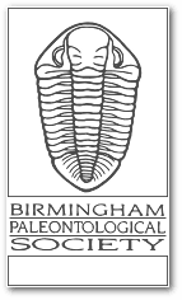Visitor
Paleo in the News
Seismic waves suggest Mars has a solid heart
NASA’s InSight lander listened to Marsquakes for four years. The tremors revealed that Mars may have a solid inner core.
Categories: Fossils
This laser would shoot beams of neutrinos, not light
The subatomic particles called neutrinos are famously elusive. But an unconventional trick could make a laser beam of the aloof particles.
Categories: Fossils
Your red is my red, at least to our brains
Despite philosophical debates, colors like red may spark similar brain activity across individuals, new research suggests.
Categories: Fossils
Drugs like Ozempic might lower cancer risk
GLP-1 medications like Ozempic, Wegovy and Mounjaro might lower people’s risk of developing certain cancers, especially ones linked to obesity.
Categories: Fossils
Just like humans, many animals get more aggressive in the heat
From salamanders to monkeys, many species get more violent at warmer temperatures — a trend that may shape their social structures as the world warms.
Categories: Fossils
Dinosaur teeth reveal secrets of Jurassic life 150 million years ago
Sauropod tooth scratches reveal that some dinosaurs migrated seasonally, others ate a wide variety of plants, and climate strongly shaped their diets. Tanzania’s sand-blasted vegetation left especially heavy wear, offering rare insights into ancient ecosystems.
Categories: Fossils
Dinosaur teeth reveal secrets of Jurassic life 150 million years ago
Sauropod tooth scratches reveal that some dinosaurs migrated seasonally, others ate a wide variety of plants, and climate strongly shaped their diets. Tanzania’s sand-blasted vegetation left especially heavy wear, offering rare insights into ancient ecosystems.
Categories: Fossils
Baby pterosaurs died in ancient storms—and their fossils reveal the truth
Two tiny pterosaurs, preserved for 150 million years, have revealed a surprising cause of death: violent storms. Researchers at the University of Leicester discovered both hatchlings, nicknamed Lucky and Lucky II, with broken wings—injuries consistent with being tossed through the air by powerful gusts. These storms not only claimed their lives but also created the rare conditions that preserved them so perfectly in the Solnhofen limestones.
Categories: Fossils
Baby pterosaurs died in ancient storms—and their fossils reveal the truth
Two tiny pterosaurs, preserved for 150 million years, have revealed a surprising cause of death: violent storms. Researchers at the University of Leicester discovered both hatchlings, nicknamed Lucky and Lucky II, with broken wings—injuries consistent with being tossed through the air by powerful gusts. These storms not only claimed their lives but also created the rare conditions that preserved them so perfectly in the Solnhofen limestones.
Categories: Fossils
Woolly mammoth teeth reveal the world’s oldest microbial DNA
Scientists have uncovered microbial DNA preserved in mammoth remains dating back more than one million years, revealing the oldest host-associated microbial DNA ever recovered. By sequencing nearly 500 specimens, the team identified ancient bacterial lineages—including some linked to modern elephant diseases—that coexisted with mammoths for hundreds of thousands of years. These discoveries shed light on the deep evolutionary history of microbes, their role in megafaunal health, and how they may have influenced adaptation and extinction.
Categories: Fossils
Woolly mammoth teeth reveal the world’s oldest microbial DNA
Scientists have uncovered microbial DNA preserved in mammoth remains dating back more than one million years, revealing the oldest host-associated microbial DNA ever recovered. By sequencing nearly 500 specimens, the team identified ancient bacterial lineages—including some linked to modern elephant diseases—that coexisted with mammoths for hundreds of thousands of years. These discoveries shed light on the deep evolutionary history of microbes, their role in megafaunal health, and how they may have influenced adaptation and extinction.
Categories: Fossils
Baby pterosaurs could fly right after hatching – but crashed in storms
Two fossils found in Germany show very young pterodactyls with arm bones thought to have been broken in flight, probably because of severe tropical cyclones
Categories: Fossils
Young pterosaurs probably died in violent Jurassic storms
Two hatchling pterosaurs with fractured arm bones point to ancient storms as the cause of mass casualties preserved in Germany’s Solnhofen Limestone.
Categories: Fossils
Astronomers detect the brightest ever fast radio burst
The fast radio burst came from 130 million light-years away. That proximity allowed an in-depth search for what produced the mysterious signal.
Categories: Fossils
Powerful images show dark side of South-East Asia’s fishing industry
Photographer Nicole Tung captures the tough world facing South-East Asia’s fishers and their families in this series of images, which won her the Carmignac Photojournalism Award for fieldwork
Categories: Fossils
A sixth mass extinction? Not so fast, some scientists say
A new analysis suggests that recent extinctions have been rare, limited mostly to islands and slowing. But others argue this is all just semantics.
Categories: Fossils
Tiny thumbnails may be key for rodents’ global takeover
Thumbnails might have boosted rodents’ food-handling skills, helping them thrive worldwide.
Categories: Fossils
Early penguins may have used dagger-like beaks to skewer prey
Four new species of aquatic birds related to modern penguins have been described from fossils found in New Zealand, showing how these creatures flourished around 60 million years ago
Categories: Fossils
Here’s how fruit flies’ giant sperm squeeze into tight spaces
Researchers found that fruit fly sperm push against one another and align in orderly bundles, preventing knots that could block reproduction.
Categories: Fossils
Venice’s iconic winged lion statue originated in ancient China
European artisans turned a Tang Dynasty tomb guardian sculpture into a symbol of medieval Venetian statehood, researchers say.
Categories: Fossils
